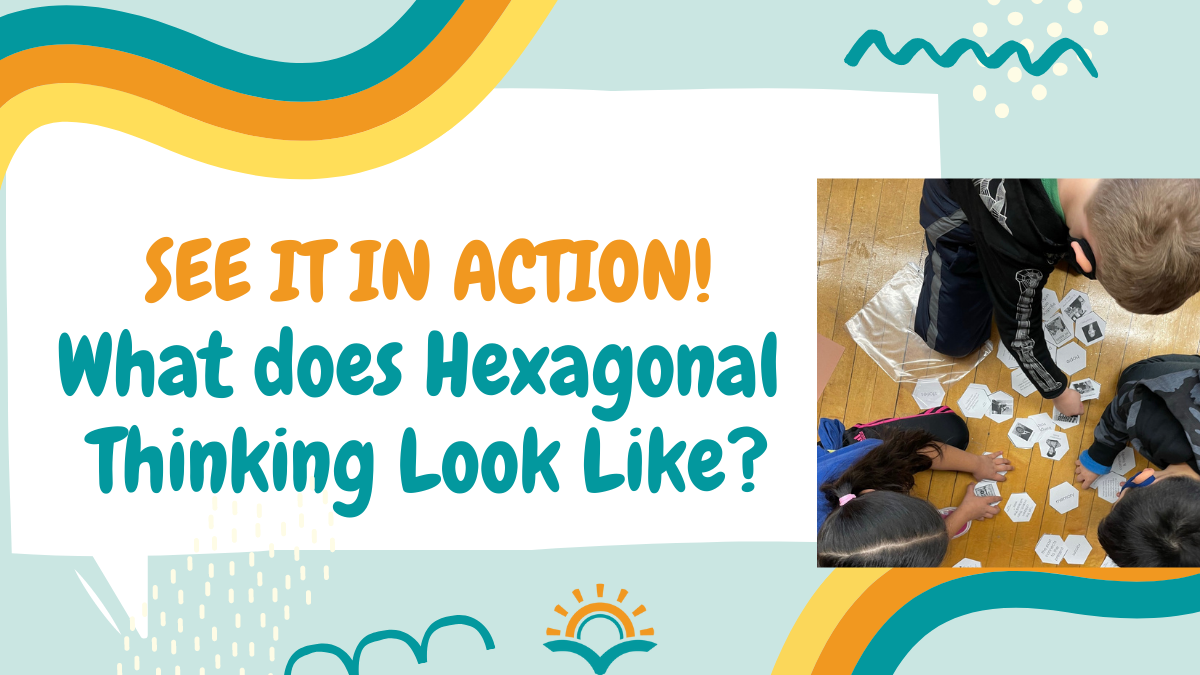
Have you heard of Hexagonal Thinking? This thinking and connections-making strategy is spreading like wildfire in classrooms all over. But what does hexagonal thinking in the classroom look like? How can you use it in your student-centered classroom? Read below for some hexagonal thinking examples – and visions for how you could use this in your learner-led space!

What does hexagonal thinking look like for teachers?
Hexagonal thinking in collaborative planning
Mix up the usual “everyone look at the same Google doc” or “who will be our scribe today?” Instead, use hexagonal thinking to help teachers creatively map out their next unit of study. Use the tiles to map out:
- Learning standards and objectives
- Texts
- Essential questions
- Enduring understandings
- more!
Then, label the intersections with learning provocations and activities. Think: “how will we help students make this connection?”
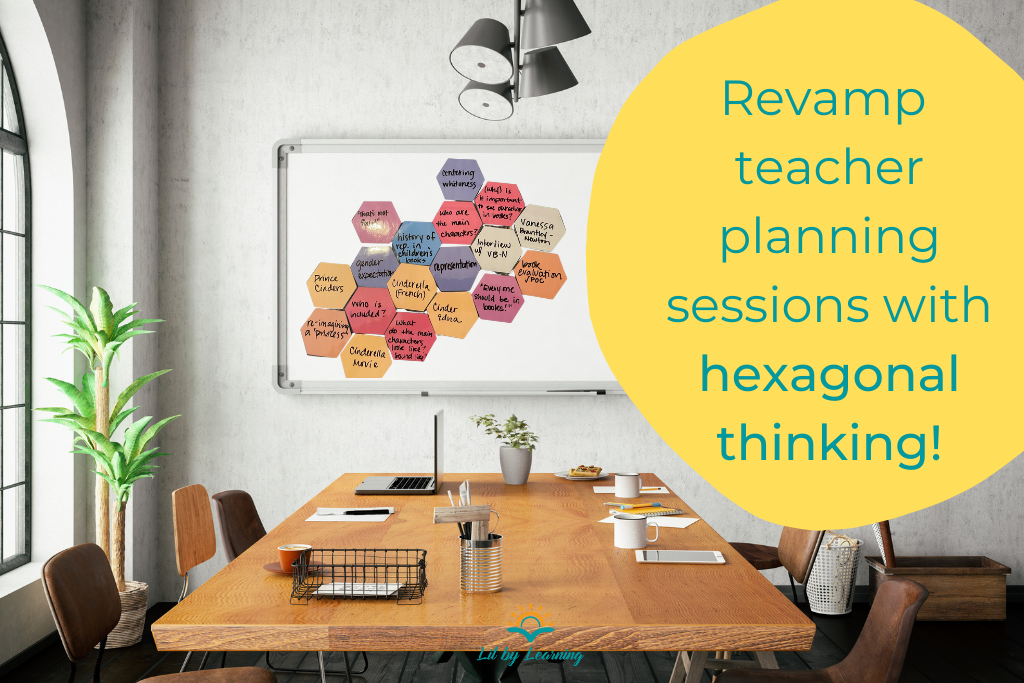
What does hexagonal thinking look like when planning for students?
When planning hexagonal thinking for students, it’s important to first consider its role in your sequence. Is the activity a pre-unit provocation? Is it the end-of-unit assessment? Then, tailor your hexagon tiles to match that purpose. Think, “what will get students thinking about these concepts? What kinds of conversations do I hope to hear?”
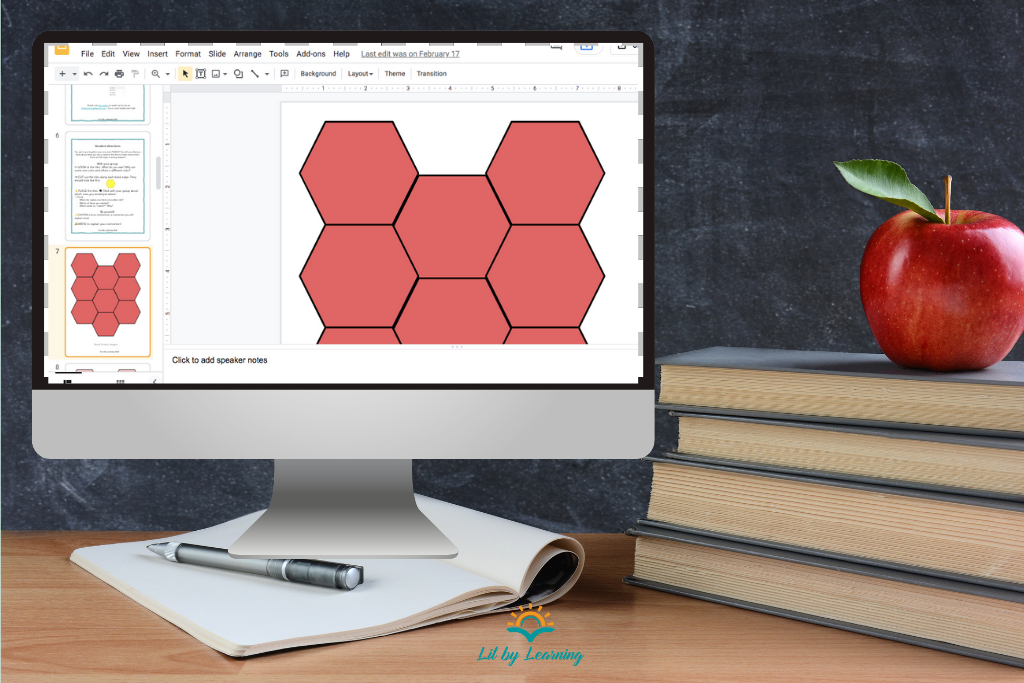
Then build out ideas, making a page of tiles for each type. See my example below!
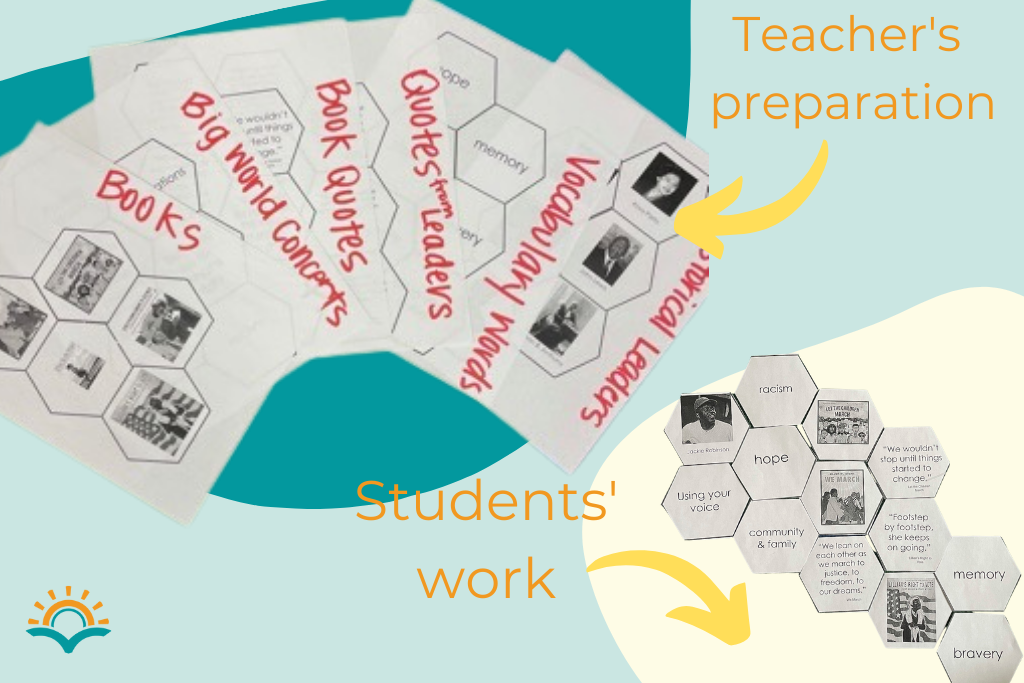
What does hexagonal thinking look like for students?
One of the most amazing things about hexagonal thinking is how versatile it is. Students of all ages love this tactile, puzzle-like way of making connections. Clearly, though, students at different levels will need a) appropriate materials and b) necessary support. Read on to see what this can look like for your grade level!
What does hexagonal thinking look like for early elementary and primary students?
For elementary and primary students, you’ll want to incorporate plenty of visuals and texts at an accessible reading level. I also highly recommend modeling the process thoroughly (serious teacher voice here) before sending students off to work.
On hexagonal tiles for elementary/primary students, I love to include:
- Book covers & titles
- Pictures of illustrations from the book
- Names & pictures of characters/ key players
- 1-word themes (curiosity, joy, hardship)
- Short quotes from the texts
- Short student quotes
- Student work examples

What does hexagonal thinking look like for upper elementary and high school students?
I am not an upper grades teacher, but never fear! It is easy to scaffold hexagonal tiles to match your groups’ needs and interests! Make sure to check out this blog for more ideas for upper elementary and secondary students!
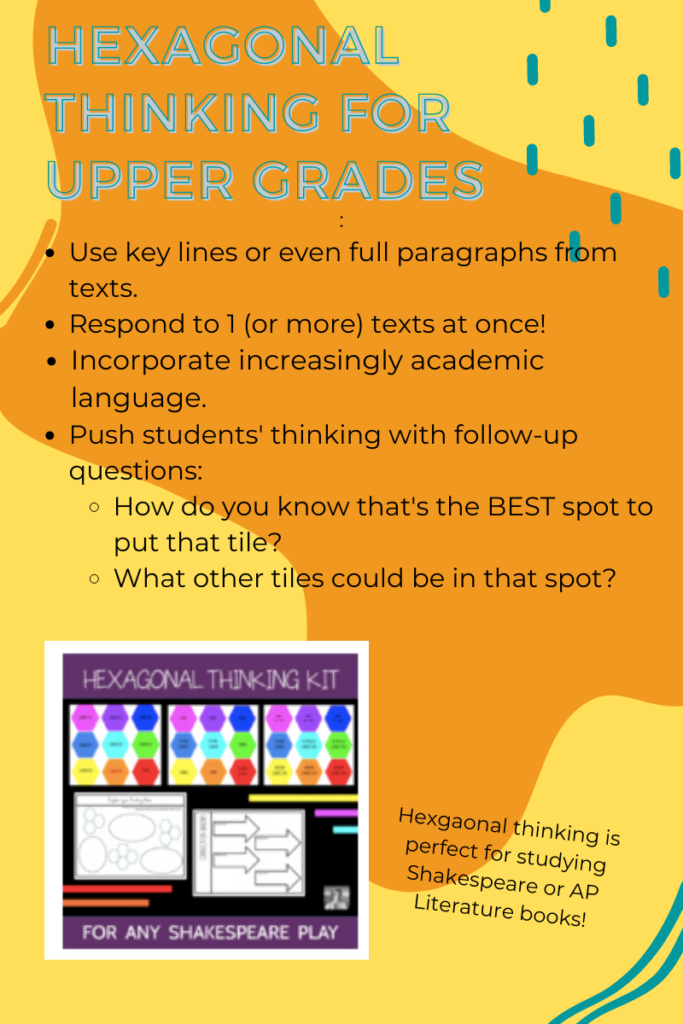
What does hexagonal thinking look like in YOUR classroom?
The limit doesn’t exist
Honestly, the limit to this amazing thinking strategy doesn’t exist – or at least I haven’t found it yet! Get creative with your tiles & with the process. Here are some ideas I have but haven’t gotten to try just yet:
- Prompt students to create their own tiles, either at the end of a unit or as an ongoing “collection.” For example: each time students finish a chapter, they create corresponding tiles.
- Make your own (teacher) hexgaonal thinking map and ask students to critique it & make arguments for changes. Make it into a debate!
- Create tiles you can use again and again in an academic year. Have a bulletin board where students are encouraged to tie together new ideas on a rolling basis!
Think cross-curricularly!
Now THIS is where I really see the hexagonal thinking strategy shine. Tie together social studies concepts with authors’ biographies and their texts. Urge students to connect science concepts with current events and poetry. The more cross-curricular your tiles, the more I am CONVINCED you’ll witness your students making novel, incredible connections.
The more cross-curricular your tiles, the more I am CONVINCED you’ll witness your students making novel, incredible connections.
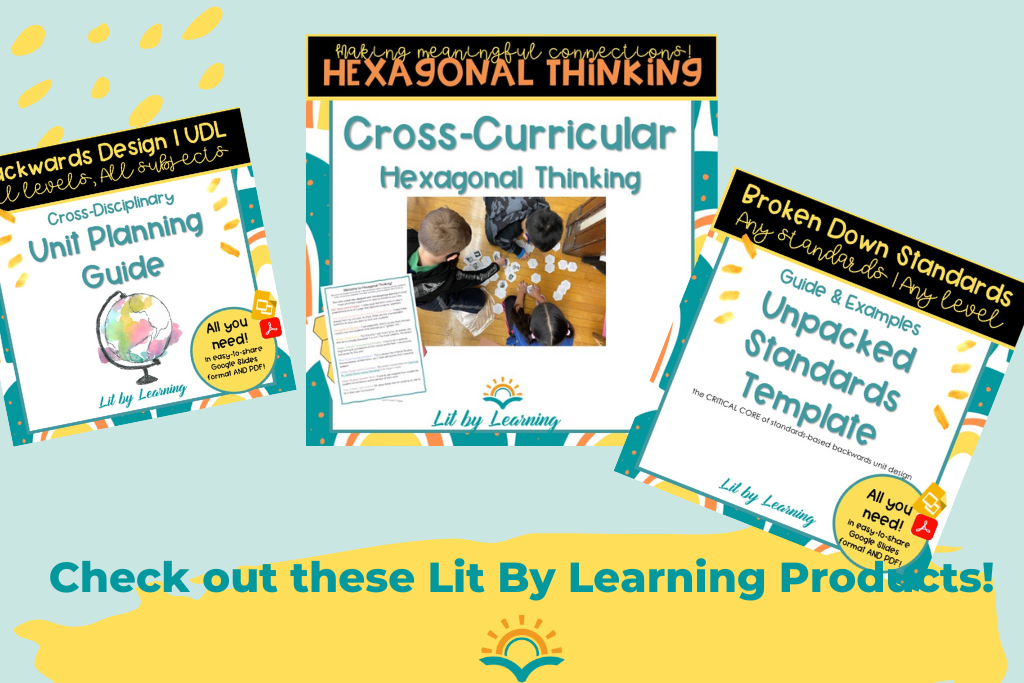
Read more!
Check out these other posts from Lit By Learning!
- Your Top 5 Hexagonal Thinking Questions Answered! Read here for even more info about this awesome strategy!
- Looking to supercharge your cross-curricular instruction? Head over to read my #1 secret here!

